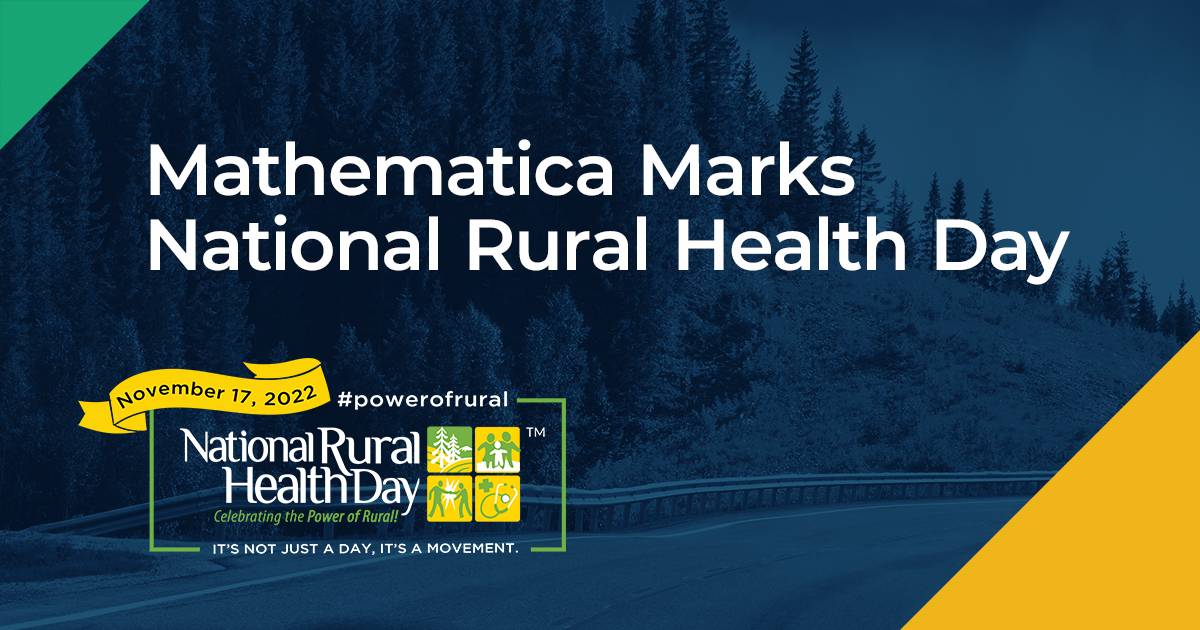The National Organization of State Offices of Rural Health sets aside the third Thursday of every November to recognize National Rural Health Day. This opportunity to “Celebrate the Power of Rural” honors the selfless, community-minded spirit that prevails in rural America. National Rural Health Day showcases the efforts of rural health care providers, state offices of rural health, and other rural community members to address the unique health care challenges rural citizens face. Several Mathematica projects spanning evaluation, technical assistance, and analytics support this effort to improve rural health care, enhance its quality, and introduce payment reform.
Mathematica is continuing its work supporting the Pennsylvania Rural Health Model, a project for the Center for Medicare and Medicaid Innovation (the Innovation Center) at the Centers for Medicare & Medicaid Services (CMS) and the Pennsylvania Department of Health. The model aims to increase rural Pennsylvanians’ access to high-quality care and improve their health, while reducing the growth of health care spending and improving the financial viability of rural Pennsylvania hospitals. Rural hospitals participating in the model are paid based on all-payer global budgets—a fixed amount set in advance for inpatient and outpatient hospital-based services.
Mathematica also created an interactive dashboard to help rural hospitals examine and reduce potentially avoidable utilization (PAU) while continuing to provide high-quality care. The dashboard measures the proportion of Medicare revenue from PAU at each rural hospital in the United States.
Our researchers estimated physician supply and demand for urban and rural areas in Maryland, helping state officials address workforce planning and graduate medical education needs in rural areas. The team also compared changes in health care utilization and cost since the start of the Maryland Total Cost of Care (TCOC) Model. Mathematica is conducting an independent evaluation of the TCOC Model, which was established in 2018 through an agreement with CMS and Maryland. The model creates incentives and supports for hospitals, primary care practices, and other providers to reduce medical spending, enhance quality of care, and improve population health throughout the state. A Mathematica report examines the first year of the model’s implementation.
New additions to Mathematica’s rural health portfolio include an evaluation of the Community Health Access and Rural Transformation (CHART) Model, several technical assistance projects supporting the new Rural Emergency Hospital (REH) designation, and projects in Vermont and Washington State analyzing health care costs and utilization:
- Working with the Innovation Center, Mathematica will conduct an evaluation to help advance the agency’s efforts to deliver high-quality care in rural communities through its CHART Model. The model aims to catalyze the modernization of rural health delivery systems through upfront funding, operational flexibilities, and an alternative payment model.
- In a project for the Health Resources and Services Administration, Mathematica is working with Rural Health Redesign Center to help the Rural Emergency Hospital Technical Assistance Center provide assistance to hospitals interested in exploring the REH designation. An REH does not provide inpatient care but offers 24-hour emergency services and other outpatient services to meet community needs.
- In Washington State, Mathematica is helping the Washington Health Care Authority design a financial model and manage engagement for the Medicaid-aligned payer model, an alternative payment model across Medicaid, Medicare, and commercial payers, to implement the CHART Model.
- Experts are analyzing Vermont’s comparative health care spending per capita, PAU, and low-value care. In partnership with Ascendient, Mathematica supports Green Mountain Care Board (GMCB) of Vermont by providing technical assistance and modeling expertise using Vermont’s all-payers claims database and hospital uniform discharge data file to estimate surgical demand by hospital service area. This project is paying particular attention to rural counties.
- Mathematica is also helping GMCB assess Vermont’s hospital budget review process, identifying areas for enhancements to modify GMCB’s statutory authority and regulatory decisions and improve alignment with payment and delivery system reform in the state. This work promotes sustainable health care services in rural areas.
Contact
-
Amy Berridge
aberridge@mathematica-mpr.com
609-945-3378


